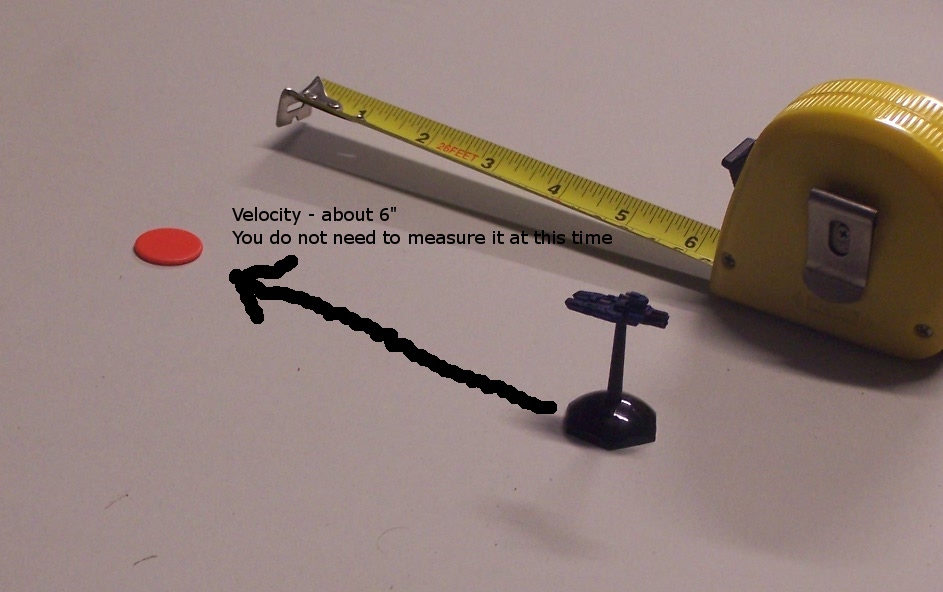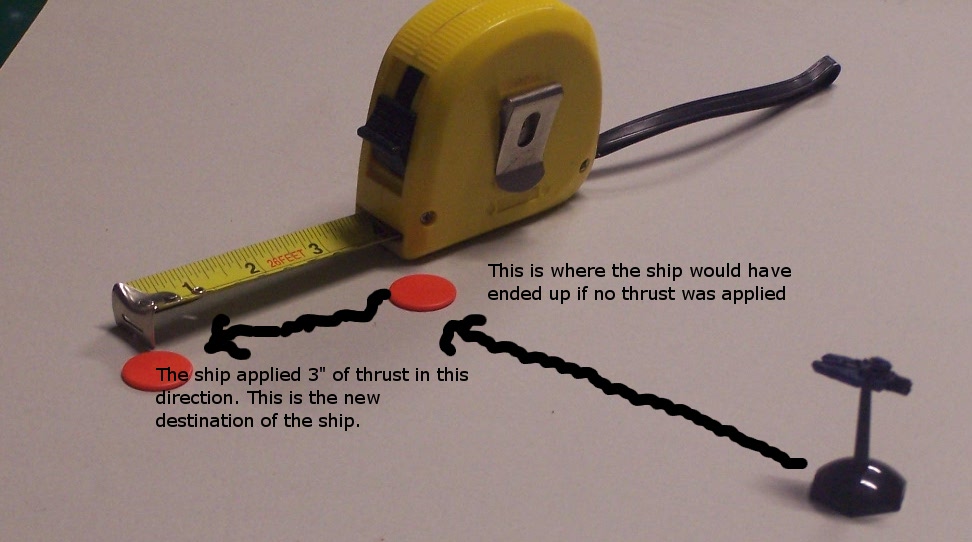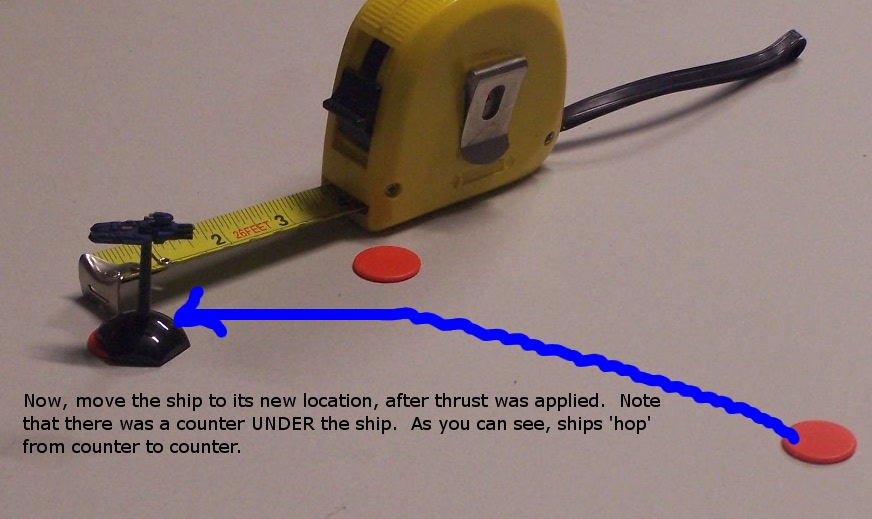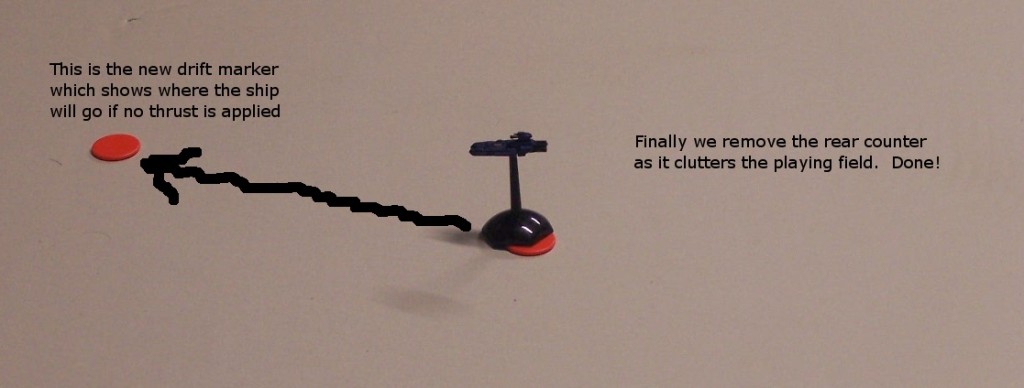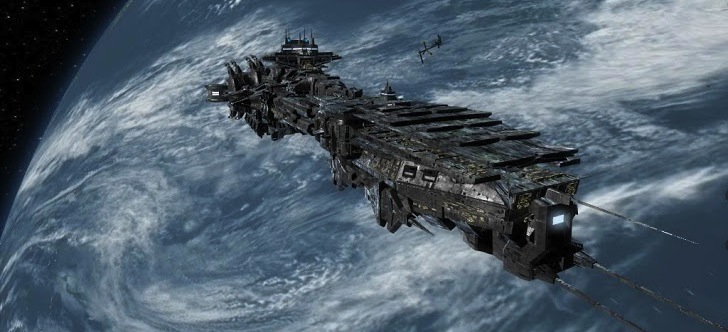
Most wargamers have probably at least taken a look at space combat games like Full Thrust, Firestorm Armada, Battlefleet Gothic and the various versions of A Call To Arms. Some may even have bought some miniatures, and tried out the rules. Some may even be enthusiasts for these games.
I am a huge fan of space-based science fiction. Before my current profession of Internet Tinkerer I was a (admittedly mediocre) physicist, and my enthusiasm for physics was born from my childhood and teenage obsession with Star Trek, Battlestar Galatica and Star Wars.
When Battlefleet Gothic came out, as a 40K fan (and previously a player of Space Fleet) I fell in love with the miniatures and immediately began collecting an Imperial Navy fleet. I now also have a Necron fleet. I bought a roll-up space mat so I could play BFG on the limited space afforded by my kitchen table.
But there was just one thing. Despite its beautiful miniatures and well-thought out rules, BFG, like most other space combat games, is basically just naval battles for goths. Any system that's limited to two dimensions is going to end up like a historical or modern naval warfare game. Starships shouldn't have broadsides: the scale difference between the ships and the distances between them make such concepts meaningless.
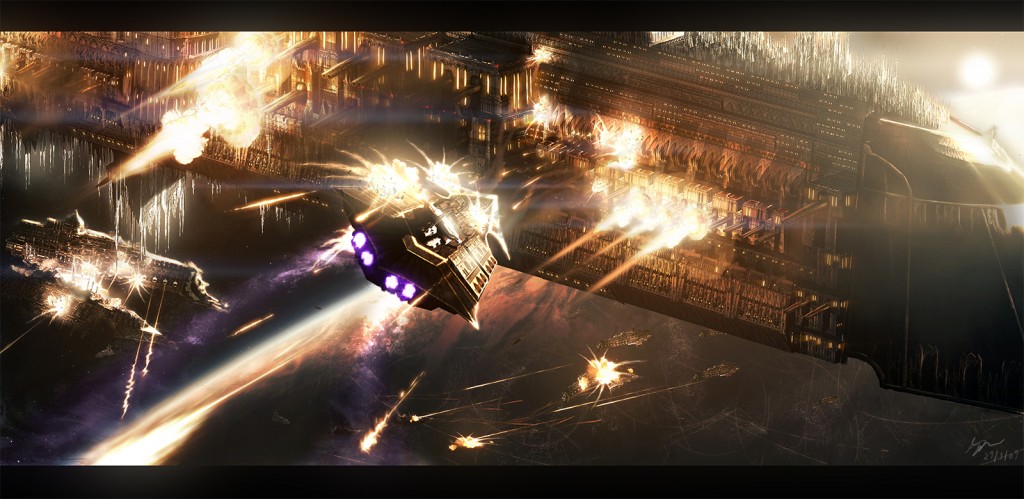
Space is quite different to sea. It's a good deal larger for a start. But also, things move differently. Spaceships are not boats - if you turn off their engines, they don't stop. They can't turn corners in the same way that ships or fighter aircraft do, because there's nothing there to push against to make them turn.
Of course, I am not the only person to notice this. It has been remarked upon many times in the past. There have been attempts to try and rectify this problem, but none have been particularly satisfying.
For the last few months, I've been following a blog being written by someone who might have finally hit on a solution. An antipodean gent by the name of evilleMonkeigh has brought together the threads of a number of different gaming systems and is creating something which feels completely original. His game's name, Delta Vector, is a sly nod to Δ𝓋, the mathematical expression for a change in velocity, and the truth of Newtonian mechanics which most space combat games ignore.
In the past year evilleMonkeigh has posted about thirty articles outlining the basic operating principles of the game. For me, the most interesting thing is the system of inertia which governs the movement of ships. In evilleMonkeigh's words:
I'm going to explain it with a series of pictures. You will need 3 counters per ship. One counter is under the ship base at all times. I'm using EM4 tiddlywinks as they are cheap and fit perfectly under a 'standard' hex base (available GZG or EM4).
Once the movement process is completed only 1 counter is visible so you aren't overly cluttering up the game table. Obviously you could put a name or code on each ship's set of counters so you don't confuse them.
Ok, here we go:
#1. The counter shows the ship velocity and drift direction - where it will end up at the end of its next move if no thrust is applied. You don't need to measure anything - this is how ships will look when you are not moving them (i.e. most of the time).
#2. But it is our ship's turn to move and we choose to move him 3" to the left. The ship applies 3" thrust and a new counter is put down, showing the new destination now thrust has been applied.
You may need your tape to measure the thrust distance.
#3. Now we move the ship to its new location. You will note there was a counter under the ship's base before - ships move from counter to counter. The old pre-thrust drift marker no longer has any relevance, unless you are using the "Facings" optional rule (to be posted separately).#4. You definitely need to get your tape out now. Leaving the markers where they are, we measure the new velocity (the distance travelled between the ships old location and its new location). In this example it is 8".
#5. Using the tape, we make a straight line between the old and new ship locations, and go beyond it to put down a new marker 8" in front of the ship.
#6. Simply remove the rear counter to tidy things up and we are back were we started at step 1, with the counter in front of the ship showing the direction and velocity of its drift.
When you combine this with an activation based, initiative-driven game sequence, in which enemy ships can react to your actions; resource management; electronic warfare; and an attempt to give escorts a more significant role in the game, it seems to me that Delta Vector has the potential to redefine space-based combat games. I'm looking forward to when the rules are published. If you are too, then subscribe to the Delta Vector blog!

